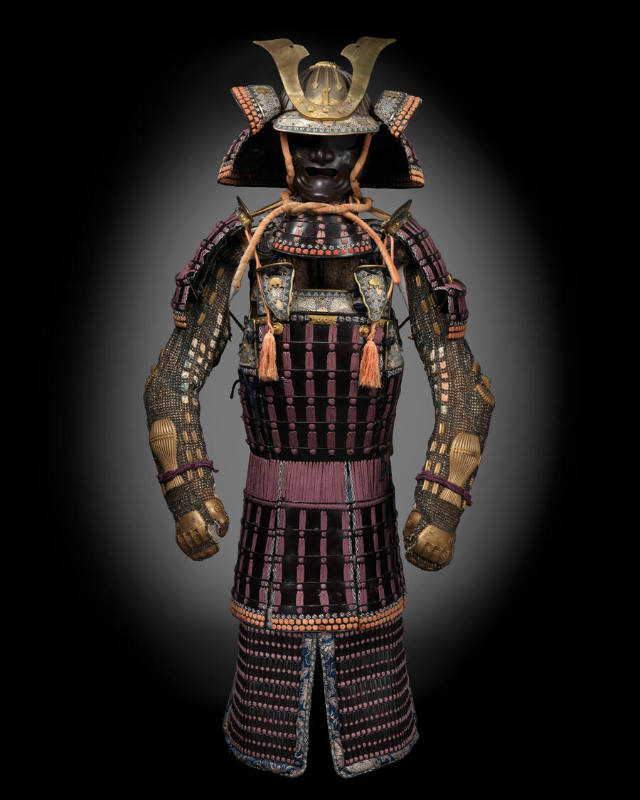Samurai Armor or Ceremonial Armor
Maker
Myochin Ki Muneyoshi
(Japanese, 19th century)
CultureJapanese
Date19th century
MediumIron, silk, silver, gilt, copper, chain mail, and suede
DimensionsOverall: 58 x 12 in. (147.3 x 30.5 cm)
InscribedThe O-Boshi-Suji-no-Kabuto (low rounded helmet with standing flanges) is signed Myochin Ki Muneyoshi saku (saku means made). The armor and helmet are emblazoned with the heraldic device (mon) of the Akita family of Iwashiro Province and daimyos (feudal lords) in that province. The heraldic device takes the form of a fan with crossed feathers and tassels.
Credit LineGift of Walter P. Chrysler, Jr.
Object number71.3011
Collections
On View
Chrysler Museum of Art, Gallery 106
Label TextSamurai Armor Japanese, 1800–1900 c.e. Lacquered iron, gilding, copper, chain mail, silk, cotton, and paper Gift of Walter P. Chrysler, Jr. 71.3011 As the elite soldiers of a daimyo, or feudal lord, samurai were expected to exemplify dignity through their appearance. Craftsmen used lamellar, or metal plate construction, to give the armor its flexibility and scale-like appearance. They also decorated the armor and helmet with family crests to indicate who commissioned it. Look for the fans with crossed feathers and tassels. The motif indicates this suit was made for the Iwaki family of Akita Province, Japan.
ca. 1615












